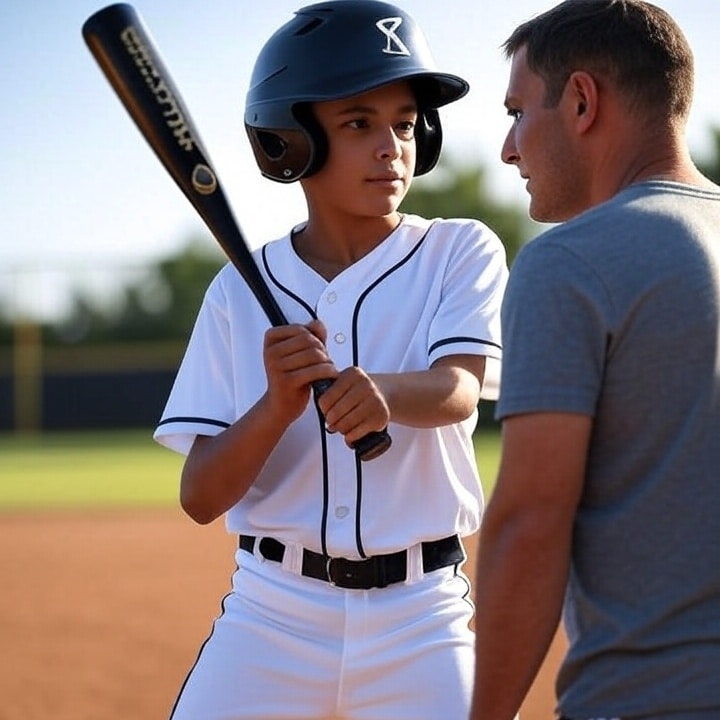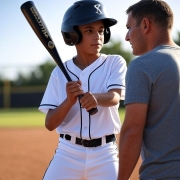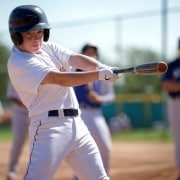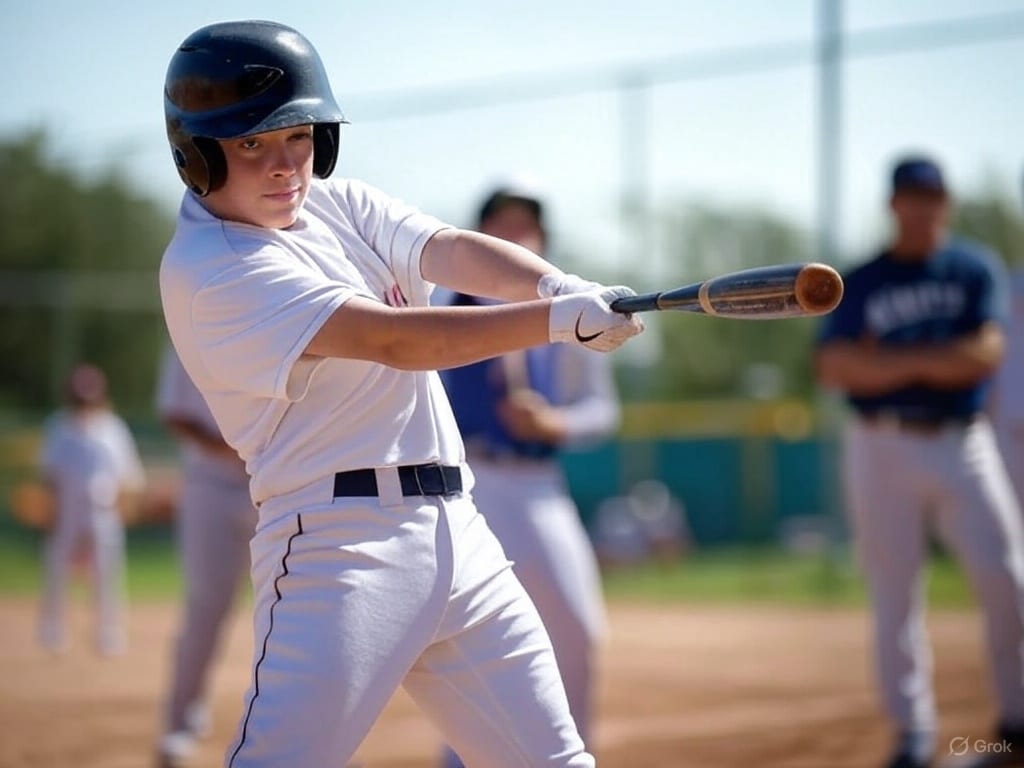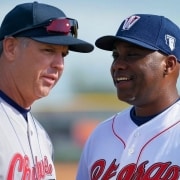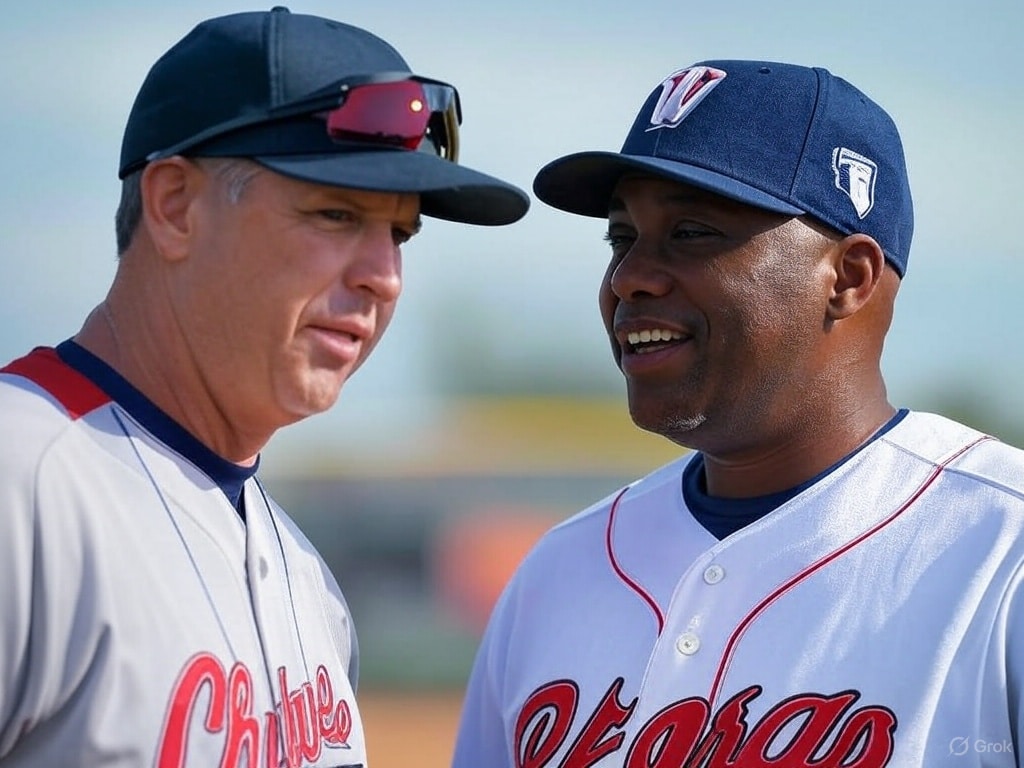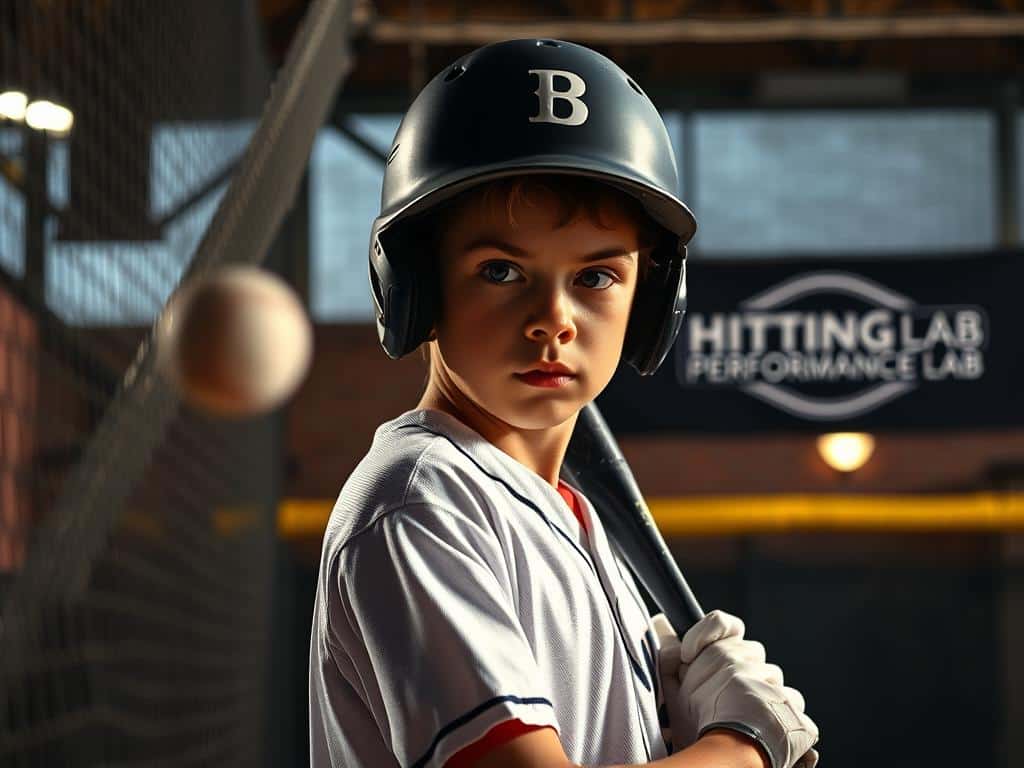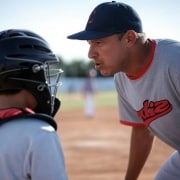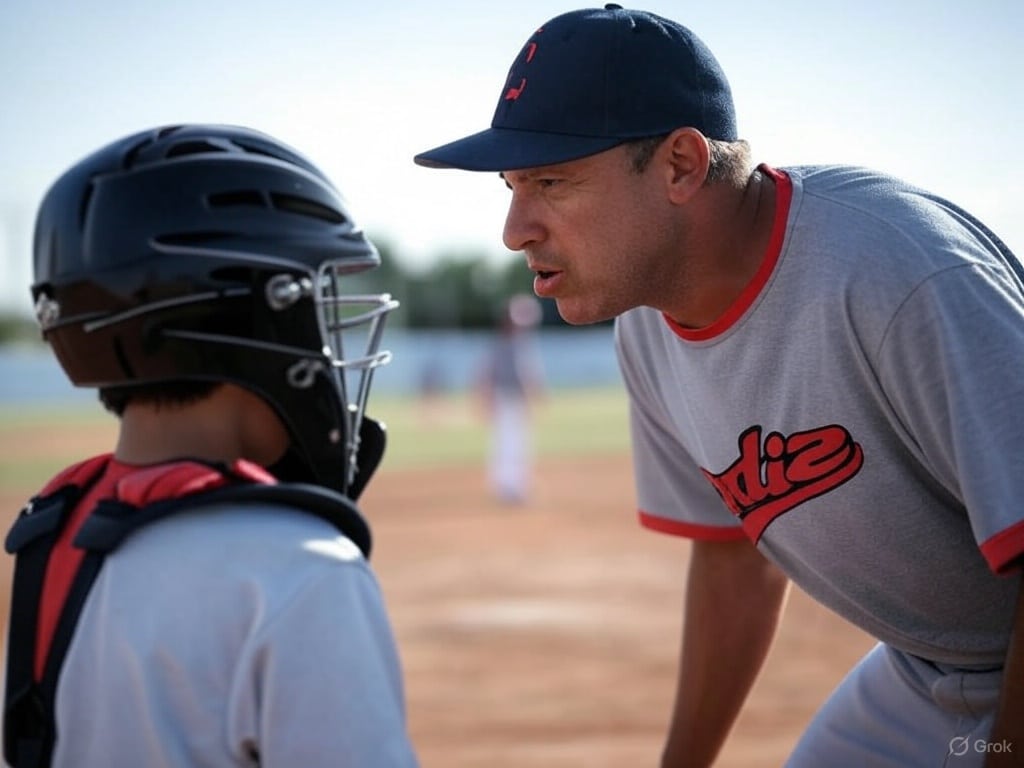
The One Curveball Drill No Coach Is Teaching (That Actually Fixes Timing Fast)
Hitting a curveball is one of the toughest tasks in baseball! The deceptive spin and unpredictable trajectory make it a nightmare for even the most experienced hitters. Mastering the art of hitting curveball requires dedication, and specific drills improve your ability to recognize and react to these challenging pitches.
At Hitting Performance Lab, we’ve seen firsthand how curveball timing issues can make or break a player’s season, especially after they demonstrate authority hitting the fastball. But what if you could master the art of hitting off-speed pitches? Our comprehensive guide reveals the secret to improving your recognition and contact rates with gamified drills that actually work!
Key Takeaways
- Understand why hitters struggle with off-speed pitches and how to overcome this challenge.
- Discover the science behind recognizing deceptive pitches before they leave you swinging at air.
- Learn three gamified drills that have been tested with players at all levels, providing measurable improvements.
- Transform your approach to curveballs and other breaking pitches with actionable, fun training methods.
- Improve your batting average and confidence at the plate by mastering curveball timing.
Why Hitters Struggle with Curveball Timing
Curveballs are notoriously difficult to hit early on in a hitters career, and the reasons behind this difficulty are rooted in the pitch’s unique characteristics. The pitcher’s goal with curveballs and off-speed pitches is to keep the hitter off balance with not only movement but also a change in speed.
The Deception of Off-Speed Pitches
The deceptive nature of breaking pitches, such as curveballs, comes from both their reduced velocity and their non-linear movement. This creates a double challenge for hitters trying to make solid contact. Curveballs disrupt the timing mechanisms that batters develop primarily against fastballs, making it like your brain is expecting one thing and gets something completely different!
Common Mistakes When Facing Breaking Balls
Many hitters make the critical mistake of committing their weight forward too early, leaving them vulnerable when the ball breaks late and changes trajectory. Young hitters especially struggle because they haven’t developed the visual recognition skills to identify spin patterns quickly enough to make adjustments.
| Common Mistakes |
Consequences |
Adjustments Needed |
| Committing weight forward too early |
Vulnerability to late-breaking balls |
Improve visual recognition skills |
| Not adjusting to spin patterns |
Difficulty in making solid contact |
Practice identifying spin patterns |
| Failing to adjust timing |
Struggling against off-speed pitches |
Develop timing mechanisms for off-speed pitches |
Understanding these deceptive elements is the first step toward developing effective countermeasures in your hitting approach. By recognizing the challenges posed by curveballs and off-speed pitches, hitters can begin to develop strategies to overcome them.
The Science Behind Recognizing Off-Speed Pitches
At Hitting Performance Lab, we dive into the science behind recognizing off-speed pitches! Understanding the intricacies of pitch recognition can be a game-changer for hitters. It’s not just about reacting to the pitch; it’s about anticipating it through a combination of visual cues and neurological processes.
Understanding Pitch Rotation and Movement
The rotation and movement of a pitch are critical factors in identifying its type. For instance, a curveball thrown with a specific spin will have a distinct rotation that can be picked up by the hitter’s eye. The spin of a curveball is typically slower than that of a fastball, making it easier to recognize. Different arm slots, such as over-the-top, three-quarters, and sidearm, create different spin signatures, providing early clues about the pitch type and expected movement.
The Psychology of Pitch Recognition
The psychological aspect of pitch recognition is just as important as the physical. Many hitters develop mental blocks against breaking pitches, which can slow their reaction times and decision-making processes. At Hitting Performance Lab, we emphasize the importance of mental preparation and focus in overcoming these blocks.
How Timing Mechanisms Work in the Brain
The human brain processes visual information in milliseconds, but recognizing spin patterns requires training specific neural pathways. By understanding how the brain processes timing information, hitters can develop more effective training strategies for improving their curveball recognition. This involves repetitive exposure to different pitches and focused attention on the pitcher’s hand and the initial ball flight.
Pre-Drill Mental Preparation to Fix Curveball Timing
Before we dive into the physical drills to improve curveball timing, it’s essential to address the mental preparation required to succeed at the plate. The mental game is just as crucial as the physical one when it comes to hitting a curveball effectively.
Developing a Strategic Approach at the Plate
To become a proficient curveball hitter, you need to develop a strategic mindset that begins long before you step into the batter’s box. This involves observing how pitchers work against your teammates and identifying patterns in when they throw breaking pitches. For instance, are your teammates only getting off-speed pitches when they’re down 0-2 or 1-2? Hitters tend to get jumpy when they get down two strikes, and pitchers take advantage of that, knowing they can keep the ball down and off the plate some and still have the hitter swing. By understanding these patterns, you can anticipate what’s coming and adjust your approach accordingly.
Reading Pitcher Tendencies and Patterns
Most pitchers, especially at youth and high school levels, develop predictable patterns with their pitching sequencing. They’ll often save curveballs for specific counts (0-2, 1-2) or situations. To gain an edge, learn to read subtle physical tells in a pitcher’s delivery. Many pitchers unknowingly telegraph their curveballs through slight changes in arm angle, hand position, or tempo. By creating a mental database of pitcher tendencies throughout a game, you’ll start anticipating breaking pitches rather than being surprised by them. This mental preparation creates confidence, and confidence is absolutely critical to successful timing adjustments against breaking pitches.
This is a video in the Swing Shift series…
Boost your hitting skills with Swing Shift’s science-backed practice system! This program is packed with features to improve hand path stability, timing, and power. Enjoy engaging drills for consistent progress and fun challenges to keep training exciting. Swing Shift is designed to help players succeed at every level.
The Swing Shift platform lets you focus on key mechanics like bat angle, balance, and hand path control. Dive into step-by-step video lessons that cover power, contact, and rhythm, breaking down the science behind a great swing. With personalized feedback and progress tracking, you can refine your technique and watch your results improve.
Whether you’re a youth athlete, high school player, or elite hitter, Swing Shift is trusted by families and coaches everywhere. Master core skills like bat control, weight transfer, and rotational power with drills designed for real game results. Start your journey to hitting greatness with Swing Shift!
Swing Shift’s practice system offers a wide range of tools to elevate your hitting:
- RNT-based drills for real-time correction
- Engaging challenges for competitive practice
- Personalized training goals and skill progression
- Exclusive videos on timing, power, and consistency
- Hands-on feedback to track and improve your swing mechanics
- Trusted by dedicated parents, players, and coaches
Reach your full potential with Swing Shift’s comprehensive practice system. Elevate your hitting with cutting-edge techniques and proven, science-based training.
Boost Your Child’s Hitting Confidence & Power—Fast!
Give your young hitter an edge at the plate with proven drills designed to build explosive power, consistency, and confidence. Get instant access to 4 expert-crafted hitting guides—free for a limited time!
Get Your FREE Hitting Guides Now
Gamified Drill #1: The Spin Recognition Challenge

Get ready to take your hitting to the next level with our Spin Recognition Challenge, a gamified drill that makes practice more engaging and effective! At Hitting Performance Lab, we understand that recognizing spin is crucial for hitting curveballs and other off-speed pitches. This drill is designed to improve your recognition skills, making you a more confident and effective hitter.
Setup and Equipment Needed
To set up the Spin Recognition Challenge, you’ll need a few pieces of equipment: a pitching machine capable of throwing breaking pitches (or a skilled pitcher/coach), colored markers, tennis balls or baseballs, and a tracking system (notebook or smartphone app). The key is to create distinctive spin signatures on the balls by marking them with different colored patterns. This will help train your eyes to pick up subtle rotation differences.
Execution and Scoring System
During the drill, hitters will face pitches with varying spin signatures. They must identify the type of pitch before making their swing decision. The scoring system rewards both correct identification and quality of contact, creating a comprehensive training environment. For example, you can use the “Yes or No” drill, where hitters say “Yes!” and swing if it’s a good pitch, or “No!” and let it go by. The goal is to make this decision as early as possible, right out of the hand of the pitcher or machine.
The Spin Recognition Challenge builds on traditional drills by adding competitive elements. Players earn points for correctly identifying pitch types, and the scoring system can be adjusted based on the quality of contact. This creates a friendly competition among teammates while building a critical skill that directly translates to game performance!
Progression Levels and Variations
As hitters progress through the drill, the difficulty level can be increased by introducing more complex spin patterns or by reducing the time available to make a decision. Coaches can also vary the drill by changing the type of pitches thrown or the marking on the balls. This ensures that hitters remain challenged and continue to improve their spin recognition skills.
By incorporating the Spin Recognition Challenge into your practice routine, you’ll see significant improvements in your ability to hit curveballs and other off-speed pitches. This gamified drill makes practice more engaging, fun, and effective, helping you become a better hitter!
Gamified Drill #2: Reaction Time Competition

The Reaction Time Competition is our second gamified drill, specifically designed to tackle the challenging aspect of hitting curveballs – reaction time! At Hitting Performance Lab, we understand that improving reaction time is crucial for youth baseball players to effectively hit curveballs thrown by pitchers who mix in breaking balls with their fastballs.
This drill requires minimal equipment: a partner or coach, a screen or L-screen for protection, various balls (such as tennis balls), and a timing device (like a smartphone app). The Reaction Time Competition creates a progressive challenge system where the pitcher mixes fastballs and curveballs at random, forcing hitters to make split-second adjustments. The hitter will focus on hitting one pitch or the other. DO NOT try to be on-time with both pitches.
Setup and Equipment Needed
To set up the Reaction Time Competition drill, you’ll need a partner or coach to act as the pitcher, standing behind a screen or L-screen. The pitcher will throw a mix of fastballs and curveballs, and you’ll need a timing device to measure your reaction time. Tennis balls or similar are ideal for this drill as they are safe and effective for practicing reaction times.
Execution and Scoring System
During the drill, the pitcher throws pitches at random intervals, and you must react as quickly as possible to the type of pitch thrown. Players earn points based on how quickly they identify the pitch type and how well they adjust their swing timing to make solid contact. The scoring system rewards both quick recognition and accurate hitting, simulating the pressure of game situations.
Progression Levels and Variations
As you improve, the progression system gradually decreases the time between pitches, challenging you to react faster and build neural pathways for quicker recognition. This drill is particularly effective for youth baseball players who are just beginning to face pitchers who throw curveballs. By incorporating competitive elements and precise measurement of reaction times, we’ve enhanced the traditional underhand recognition drill to provide a comprehensive training experience.
Gamified Drill #3: The Zone Control Challenge

At Hitting Performance Lab, we’re excited to introduce our most advanced gamified drill yet: The Zone Control Challenge! This drill is designed to take your hitting to the next level by combining pitch recognition, zone discipline, and proper swing mechanics into one comprehensive exercise.
Setup and Equipment Needed
To execute The Zone Control Challenge, you’ll need a few key pieces of equipment. First, you’ll require a batting cage or a field space where you can safely practice your swing. Next, you’ll need a home plate with marked strike zone regions to help you focus on specific areas of the zone. A pitcher or a pitching machine capable of throwing breaking pitches is also essential, as is having scoring materials to track your progress.
Execution and Scoring System
The Zone Control Challenge involves dividing the strike zone into strategic sections based on where curveballs and breaking pitches typically enter and finish. You’ll earn points by correctly identifying not just the pitch type but also its zone location, and then demonstrating the proper mechanical adjustments to make solid contact. The drill emphasizes maintaining proper front leg mechanics, that crucial “sink” into the front knee that allows hitters to keep their hands back just long enough for breaking pitches.
| Pitch Type |
Zone Location |
Points Awarded |
| Curveball |
Low and Away |
5 |
| Fastball |
Middle |
3 |
| Breaking Pitch |
High and Inside |
4 |
Progression Levels and Variations
As you progress through The Zone Control Challenge, we’ll introduce more challenging elements to simulate game conditions. These include mixed pitch sequences, extreme breaking pitches, and pressure situations. This drill works equally well for baseball and softball hitters, with appropriate adjustments for the different breaking pitch characteristics in each sport.
By incorporating The Zone Control Challenge into your regular practice, you’ll see significant improvements in your ability to hit curveballs and other off-speed pitches. Remember, the key is to maintain a strong front leg and delay the firing of your hands to make solid contact. With consistent practice and the right mindset, you’ll be hitting like a pro in no time!
Boost Your Child’s Hitting Confidence & Power—Fast!
Give your young hitter an edge at the plate with proven drills designed to build explosive power, consistency, and confidence. Get instant access to 4 expert-crafted hitting guides—free for a limited time!
Get Your FREE Hitting Guides Now
Conclusion: Implementing These Drills into Your Regular Practice
Now that you’ve learned the three gamified drills from Hitting Performance Lab, it’s time to integrate them into your practice routine! You’ve got a comprehensive system for fixing curveball timing issues through our proven gamified approach to training. To get started, we recommend dedicating just 15-20 minutes of focused work, 2-3 times per week. This isn’t about overhauling your entire practice routine, but making incremental improvements that add up.
The key to success lies in CONSISTENCY and PROGRESSION. Track your results with each drill and gradually increase the difficulty as your recognition and timing improve. For coaches, it’s essential to introduce these drills incrementally, starting with the Spin Recognition Challenge before advancing to the more complex Zone Control Challenge. For more insights on pitch recognition, visit Game Sense Sports website on video occlusion training software.
Remember, mental preparation remains crucial – continue developing your strategic approach at the plate alongside these physical drills. For youth baseball and softball players, these drills create a fun, competitive environment that builds critical skills without the frustration that often comes with traditional curveball training. At Hitting Performance Lab, we’ve seen dramatic improvements in players’ ability to handle breaking pitches when they commit to this systematic approach – often within just 2-3 weeks of consistent practice! The confidence gained from mastering these drills will directly translate to game performance.
FAQ
How can I improve my ability to recognize off-speed pitches, like curveballs?
To improve your recognition of off-speed pitches, focus on understanding the pitcher’s mechanics and release points. Practice with gamified drills that challenge your reaction time and pitch recognition skills, such as the Spin Recognition Challenge!
What are some common mistakes hitters make when facing curveballs?
Hitters often struggle with over-swinging or bailing out when facing curveballs. To avoid this, work on developing a patient approach at the plate and focus on making solid contact rather than trying to hit the ball out of the park!
How can I adjust my swing to better handle off-speed pitches?
To adjust your swing, focus on slowing down your swing tempo and being more discerning at the plate. Practice with slower pitches, like changeups, to improve your ability to handle off-speed pitches!
What role does the pitcher’s arm and hand play in throwing a curveball?
The pitcher’s arm angle and hand positioning play a crucial role in throwing a curveball. A pitcher with a consistent release point and spin can make it difficult for hitters to recognize the pitch!
How can I use the gamified drills to improve my hitting contact against curveballs?
By incorporating the Spin Recognition Challenge, Reaction Time Competition, and Zone Control Challenge into your practice routine, you’ll be able to improve your pitch recognition, reaction time, and hitting contact against curveballs!
Can these drills be used for softball players as well?
Absolutely! While the drills were designed with baseball in mind, the principles and techniques can be applied to softball players as well. Softball players can benefit from the same gamified drills to improve their off-speed recognition and hitting contact!
